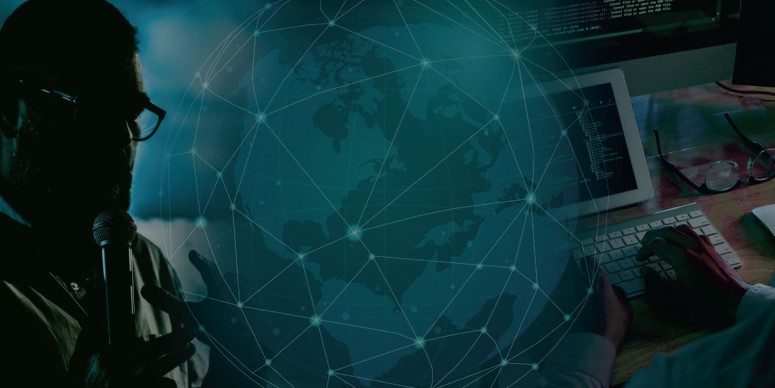In today’s post, we look back at the Global Blockchain Summit, that took place on the 10th of December, and bring you some of the highlights of the online event attended by more than 650 blockchain aficionados.
From the very basics of what blockchain really is and its technical framework to financial applications and the legal sphere that defines it - Global Blockchain Summit aimed to showcase why blockchain is the technology that the future is asking for. The expert in each field had half an hour to come to the conclusions related to the area in question and maybe make some predictions for the years to come. Until the end of 2019, you can rewatch the whole conference
here.
The online event was organized by Zigurat in partnership with Shapingwork Academy, Blasea, IOTA, Appetite for Disruption, European Blockchain Association, Zenbit, BlockBIM and Knowledge Innovation Market. But it was the amazing lineup of speakers that defined the occasion. Experts such as David Wohde, Robin Weninger, Loha Hashimy, Cedric Mössner, Daniel Diemers, Dmitry Broshkov, Serguei Popov, Guenther Dobrauz, Alejandra Labarca contributed their valuable insights for the outcome to be a resounding success.
The academic director of
Global Master’s in Blockchain Technologies, David Wohde, was in charge of the introductory block. In it, he defines blockchain as a registry of assets and respective transactions. Compared to other networks we use, blockchain is a peer-to-peer network or a distributed base. And not having one device used for storing something makes it significantly less vulnerable to attacks. Blockchain stores all the data in different blocks.
What kind of data can we store on those blocks? Anything of value from custodianship and ownership to certificates and medical records. The main problems that blockchain solves are finding consensus between a large number of widely distributed peers and creating immutable records.Robin Weninger - the professor of the master’s - delves into how blockchain changes the world around us by introducing us to trust and transparency economy. When we speak about the networks, there are five key factors that define its success: trust, transparency, clear process of access, rules of use and participation itself. And as it happens, when it comes to trust and transparency, blockchain kind of steals the show.The Global Blockchain Summit continues with Cedric Mössner explaining the tech applications of blockchain. He emphasizes that even though originally meant for banking, blockchain is a decentralized database that can be used for basically everything. He recognizes that there are some challenges, like double-spending, but nothing that building blocks of blockchain can’t prevent.
The building blocks of blockchain are our data, blocks where that data resides and that have some cryptographic properties, blockchain itself that connects the blocks together, the networking where the blockchain is distributed between users, consensus method that prevents double-spending and finally the unique improvements that each developer makes.
For example, the size of the block determines the size of blockchain and how fast transactions are executedThe first industry application’s presentation was that of Daniel Diemers where he compared the way blockchain came around with the rise of the Jedis: something that grew out of the grassroots movement because people were not happy with the financial system as it stood.
And in recent years, the traditional financial institutions or the empire, as he calls it, has started to strike back. And their favorite weapon of choice: regulations and regulators. However, Daniel considers that a constructive battle is rather profitable to build up the blockchain technologies in general.
He also reveals who he thinks is Takoshi Namamoto. In his theory, based on the bitcoin white paper and that of libra coin and the undeniable similarities between them, it’s Mark Zuckerberg. Dnaiel believes that Libra has the potential to substantially impact the dynamics of the global financial system.
He predicts that of all of the fundraising tokens out there, STOs are going to make the race.
Emerging banking happening on smartphones will have an effect on the financial market in general. Acquiring security tokens and fractional ownership blended with neo banking and tokenization could give very interesting results.
All in all, we are gonna end up in a pluralism of different forms of currencies and digital tokens. We will have central bank issued fiat currencies, central bank issued crypto currencies, e-money not backed by blockchain, closed platform cryptocurrencies, full privacy coins, tokens and hybrid cryptocurrencies and possibly something more innovative.For Guenther Dobrauz, the question is how to best use technologies. He spoke of the adaption of new technologies and how normally it starts with innovators and goes through early adopters, early majority and late majority, the laggards being the latest ones to join the party.
When speaking about blockchain, we don’t have the technology-dominant design yet. There are hundreds, even thousands of designs out there and only the time will show which design is the best. Technology is only one part of the success in a regulated market. So, if you don’t get the regulative design right, it’s not building the right technology. Without embracing the regulatory part that accompanies the innovations, we won’t get anywhere.
Guenther predicts that blockchain will reach its maturity in 5-6 years. It might sound like a long way but we must keep in mind that the adoption of new technologies in general, is going to be faster and faster.That was a little amuse-bouche of all the topics discussed on December 10th. If you wish to learn more about everything blockchain, you can
relive the Global Blockchain Summit.
Start your journey and get involved in the Blockchain Revolution!
